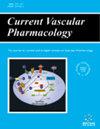鉴定区分稳定和不稳定动脉粥样硬化斑块的关键基因:生物信息学和计算分析
IF 2.8
3区 医学
Q2 PERIPHERAL VASCULAR DISEASE
引用次数: 0
摘要
背景:确定区分稳定斑块和不稳定斑块形成的生物标志物对预测斑块的易损性非常有用。研究方法我们从基因表达总库(Gene expression omnibus,GEO)数据库中下载了基因组富集(GSE)序列号为 GSE71226 和 GSE20680(A 组:包含健康斑块与稳定斑块样本)以及 GSE62646 和 GSE34822(B 组:包含稳定斑块与不稳定斑块样本)的芯片图谱。比较了各组两个数据集中的差异表达基因。结果A 组和 B 组分别筛选出 10 个和 12 个关键基因。利用 Cytoscape 的插件 "BiNGO"(生物网络基因本体工具)对基因本体(GO)进行了富集。关键基因大多富集在细胞过程的正调控生物学过程中。利用 Cytoscape 的 STRING(相互作用基因/蛋白检索工具)和 GeneMANIA(基因多重关联网络整合算法)插件分别分析了蛋白-蛋白相互作用网络和共表达网络,结果表明表皮生长因子(EGF)、肝素结合类 EGF 生长因子(HBEGF)和基质金属蛋白酶 9(MMP9)是该网络的核心。利用两个数据集对关键基因的进一步验证表明,不稳定斑块中的磷酸二酯酶 5A (PDE5A) 和蛋白 S (PROS1) 减少了,而细胞因子信号转导抑制因子 (SOCS3)、HBEGF 和白细胞免疫球蛋白样受体 B4 (LILRB4) 增加了。结论本研究利用多个数据集确定了与稳定和不稳定动脉粥样硬化斑块相关的关键基因。本文章由计算机程序翻译,如有差异,请以英文原文为准。
Identification of Critical Genes Differentiating Stable and Unstable Atherosclerotic Plaques: A Bioinformatic and Computational Analysis
Background: Identification of biomarkers to distinguish between stable and unstable plaque formation would be very useful to predict plaque vulnerability. Methods: We downloaded microarray profiles of gene set enrichment (GSE) accession numbers including GSE71226 and GSE20680 (group A: containing healthy vs stable plaque samples) and GSE62646 and GSE34822 (group B: containing stable vs unstable plaque samples) from Gene expression omnibus (GEO) database. Differentially expressed genes were compared in both data sets of each group. Results: Ten and 12 key genes were screened in groups A and B, respectively. Gene Ontology (GO) enrichment was applied by the plugin “BiNGO” (Biological networks gene ontology tool) of the Cytoscape. The key genes were mostly enriched in the biological process of positive regulation of the cellular process. The protein-protein interaction and co-expression network were analyzed by the STRING (search tool for the retrieval of interacting genes/proteins) and GeneMANIA (gene multiple association network integration algorithm) plugin of Cytoscape, respectively, which showed that Epidermal growth factor (EGF), Heparin-binding EGF like growth factor (HBEGF), and Matrix metalloproteinase 9 (MMP9) were at the core of the network. Further validation of key genes using two datasets showed that Phosphodiesterase 5A (PDE5A) and Protein S (PROS1) were decreased in unstable plaques, while Suppressor of cytokine signaling (SOCS3), HBEGF, and Leukocyte immunoglobulin-like receptor B4 (LILRB4) were increased. Conclusion: The present study used several datasets to identify key genes associated with stable and unstable atherosclerotic plaque.
求助全文
通过发布文献求助,成功后即可免费获取论文全文。
去求助
来源期刊

Current vascular pharmacology
医学-外周血管病
CiteScore
9.20
自引率
4.40%
发文量
54
审稿时长
6-12 weeks
期刊介绍:
Current Vascular Pharmacology publishes clinical and research-based reviews/mini-reviews, original research articles, letters, debates, drug clinical trial studies and guest edited issues to update all those concerned with the treatment of vascular disease, bridging the gap between clinical practice and ongoing research.
Vascular disease is the commonest cause of death in Westernized countries and its incidence is on the increase in developing countries. It follows that considerable research is directed at establishing effective treatment for acute vascular events. Long-term treatment has also received considerable attention (e.g. for symptomatic relief). Furthermore, effective prevention, whether primary or secondary, is backed by the findings of several landmark trials. Vascular disease is a complex field with primary care physicians and nurse practitioners as well as several specialties involved. The latter include cardiology, vascular and cardio thoracic surgery, general medicine, radiology, clinical pharmacology and neurology (stroke units).
 求助内容:
求助内容: 应助结果提醒方式:
应助结果提醒方式:


